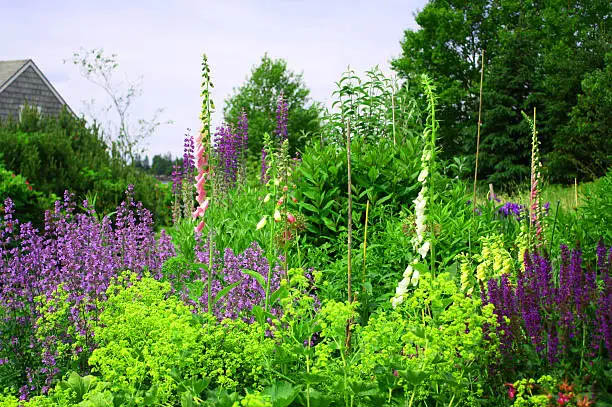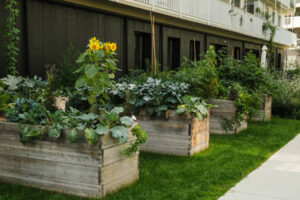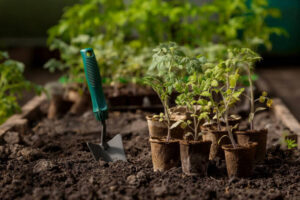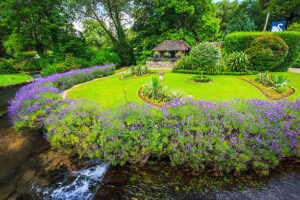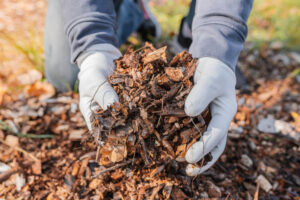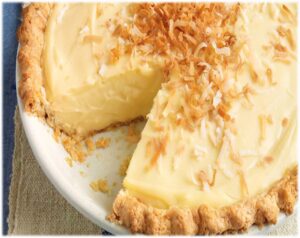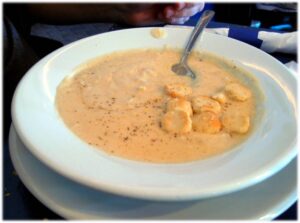Edible landscaping is a creative and practical approach that blends beauty and utility, transforming traditional gardens into spaces that cater to both aesthetic pleasure and culinary needs. This method not only enhances the visual appeal of your outdoor areas but also provides fresh, organic produce right from your backyard. Here’s how you can integrate edible plants into your home landscape effectively, making your garden both beautiful and bountiful.
Start with a Plan

Before planting, it’s important to design your garden layout. Consider factors such as sunlight, soil quality, and water access. Plan your garden so that it complements your home’s existing landscape. Use a mix of perennial and annual plants to ensure year-round beauty and productivity. For instance, perennial herbs can form borders or hedge rows, while annual vegetables can fill in the beds.
Choose the Right Plants

Selecting the right plants is crucial for a successful edible landscape. Consider the following options:
- Fruit Trees and Shrubs: Apple, cherry, and peach trees not only provide delicious fruits but also beautiful spring blossoms. Berry bushes like blueberries and raspberries offer attractive foliage and easy-to-harvest fruit.
- Herbs: Many herbs, including lavender, thyme, and sage, have decorative qualities in addition to their culinary uses. They can be used to line walkways or as fillers in flower beds.
- Vegetables: Choose vegetables that add visual interest. For example, rainbow chard has colorful stems, and eggplants have glossy, vibrant fruits. Use them as focal points in your garden.
- Edible Flowers: Flowers such as nasturtiums, marigolds, and calendula are not only beautiful but also edible. They can be used to add color to salads and dishes.
Designing Your Garden

- Utilize Vertical Spaces – If you’re limited on space, vertical gardening can be a highly effective way to integrate edibles into your landscape. Use trellises, arbors, and pergolas to grow climbing plants such as grapes, cucumbers, and beans. These structures can create living green walls or privacy screens that are both functional and attractive.
- Incorporate Companion Planting – Companion planting is a method of growing plants together that benefit each other, whether through pest control, pollination, or providing shade. For example, planting basil near tomatoes can help repel pests while enhancing the flavor of the tomatoes. Flowers like marigolds can be planted throughout the garden to deter pests naturally.
- Create Functional Yet Beautiful Layouts – Design your garden with pathways that allow easy access for maintenance and harvesting. Use raised beds or decorative containers to add structure and height to the garden. This not only makes the garden more visually appealing but also easier to manage.
- Maintain Sustainability – To make your garden more sustainable, incorporate practices such as composting and rainwater harvesting. Use mulch to conserve water and keep the soil healthy. Choosing native plants or those adapted to your climate can reduce water and fertilizer use.
Enjoy the Harvest

Finally, enjoy the fruits of your labor. Use your fresh produce in kitchen creations, from simple salads to complex dishes. Share your harvest with friends and family, and consider preserving excess produce by canning, freezing, or drying.
Rewarding Venture
Integrating edible plants into your home landscape is a rewarding venture that enhances your garden’s beauty and provides fresh ingredients for your table. With careful planning and creativity, your edible landscape can thrive, bringing together form and function in a delightful and productive way. Whether you are a seasoned gardener or a beginner, these tips will help you build a garden that is both beautiful and abundant.

